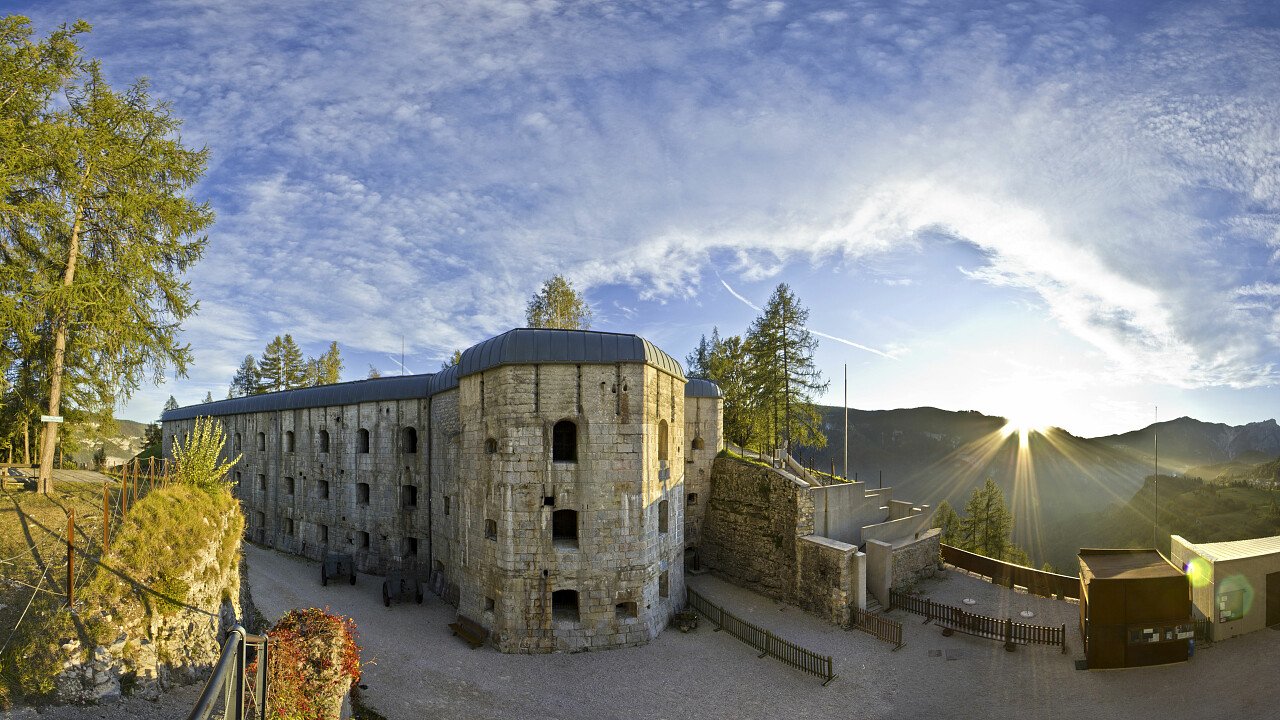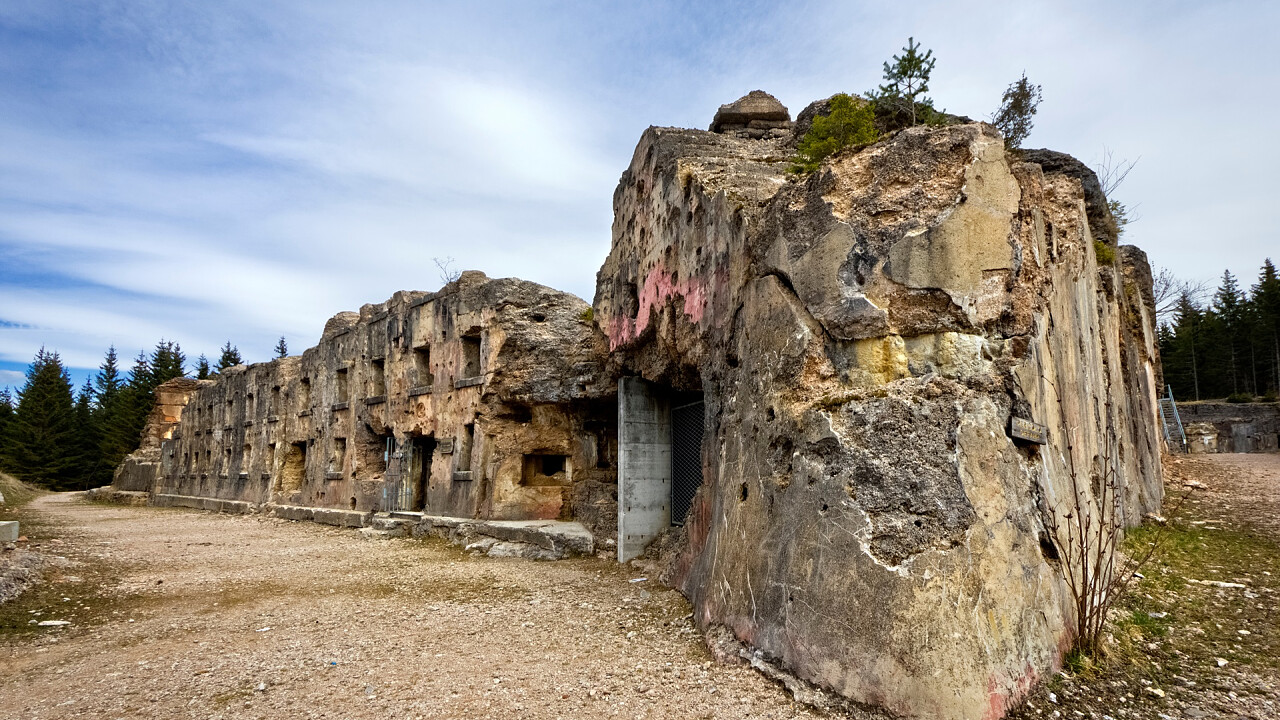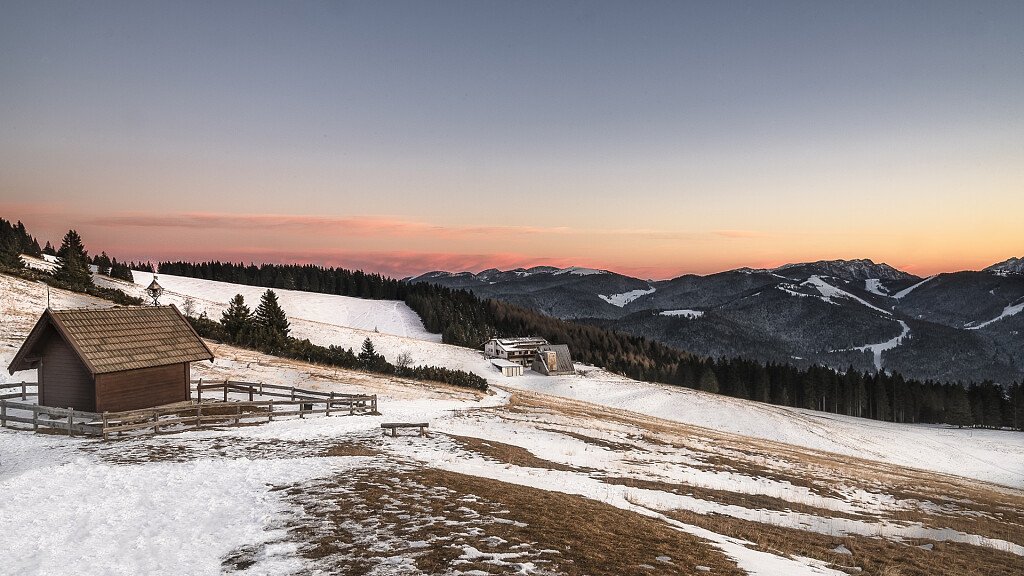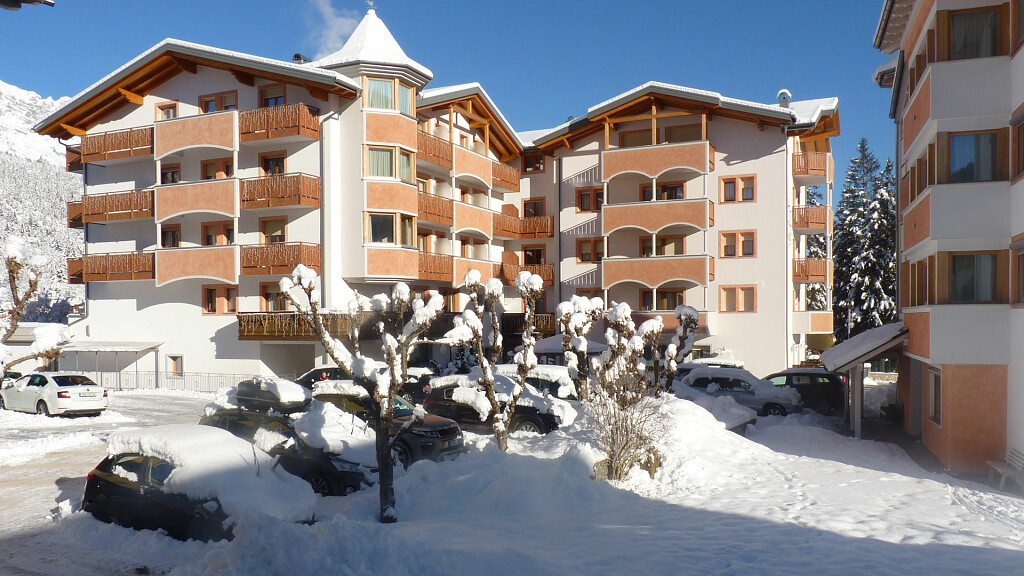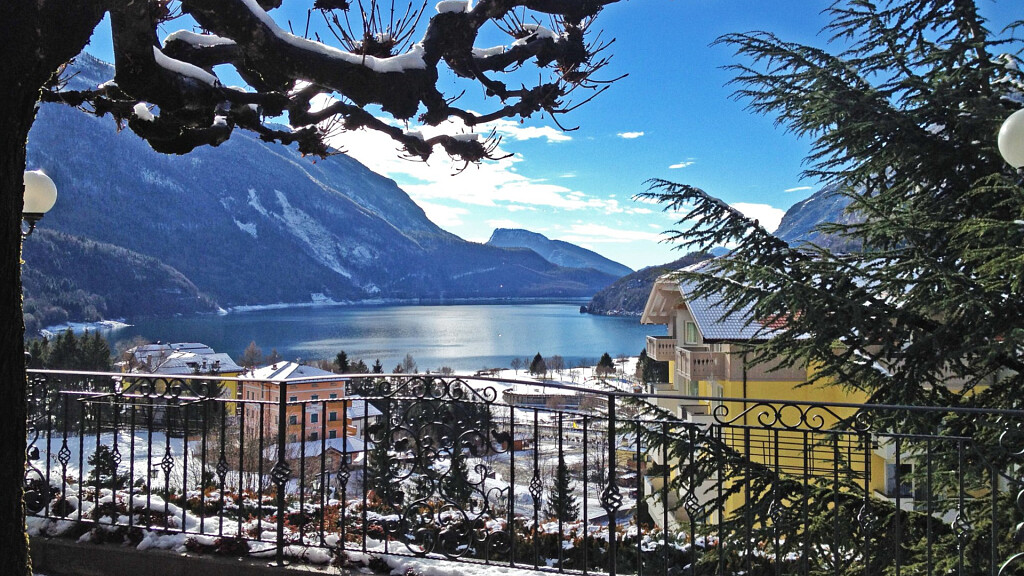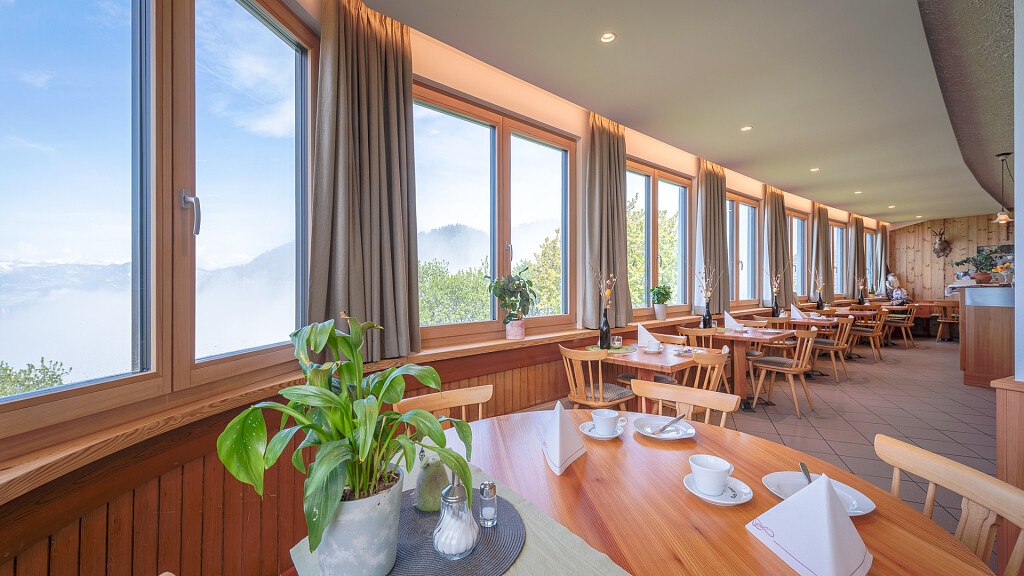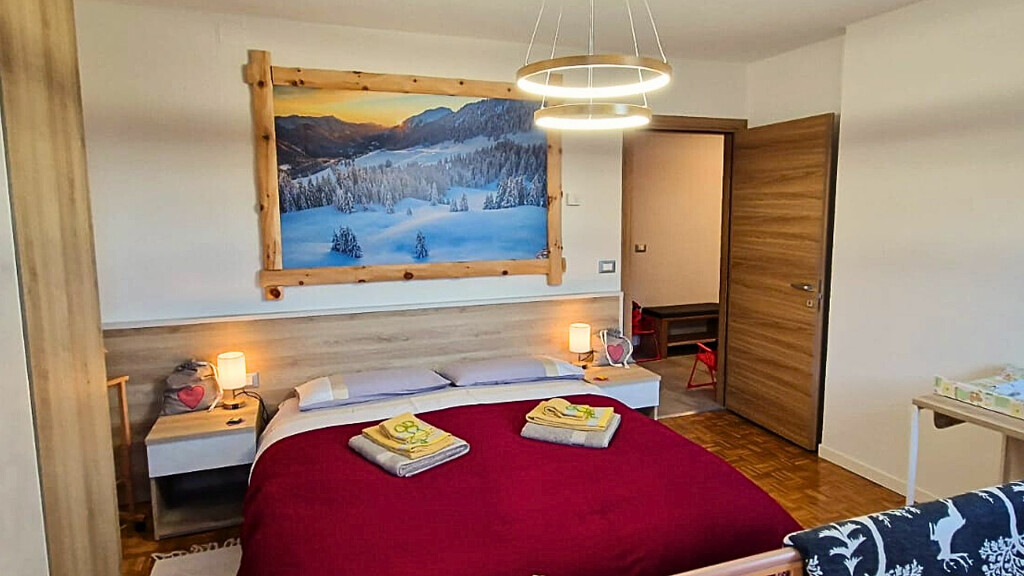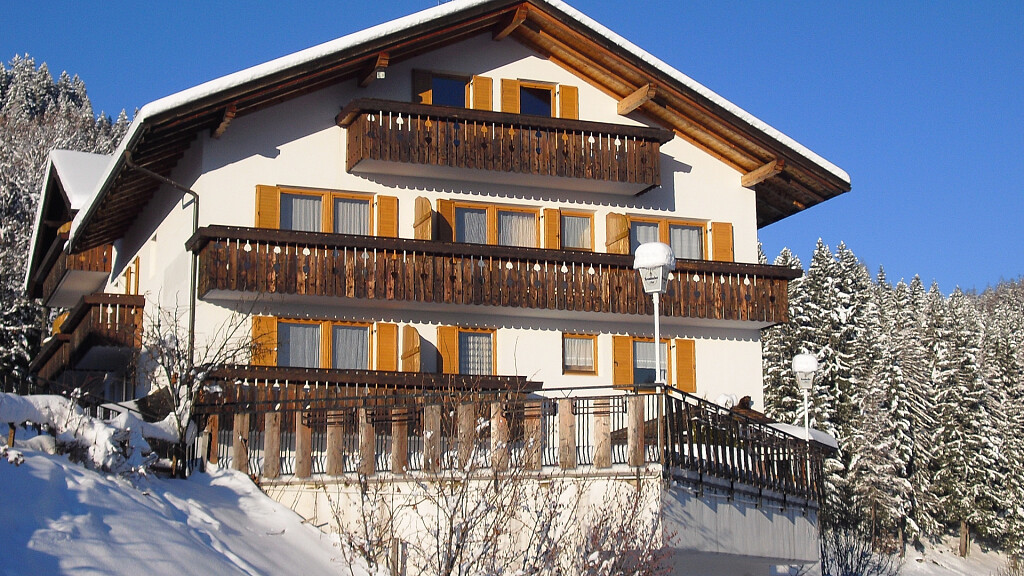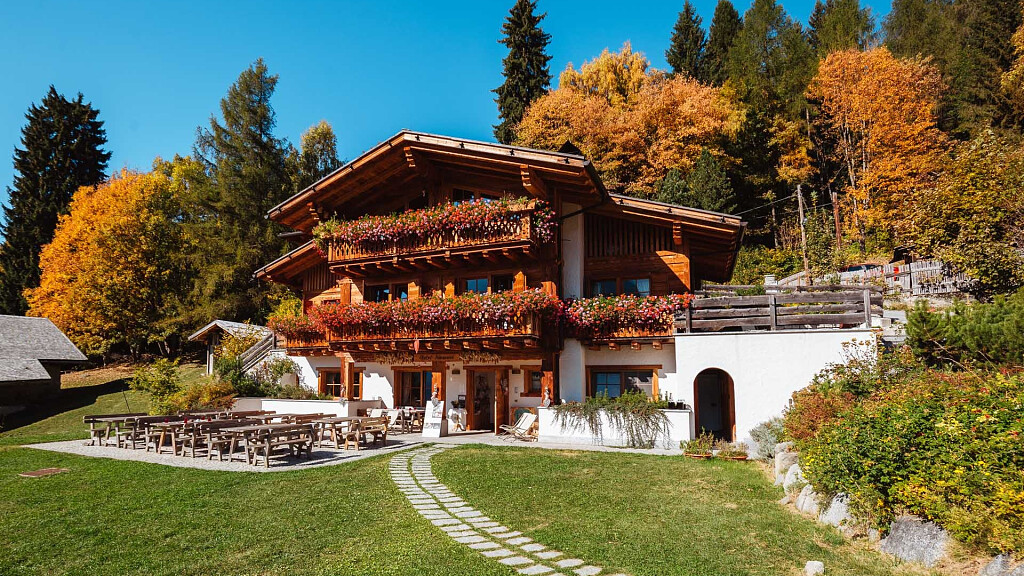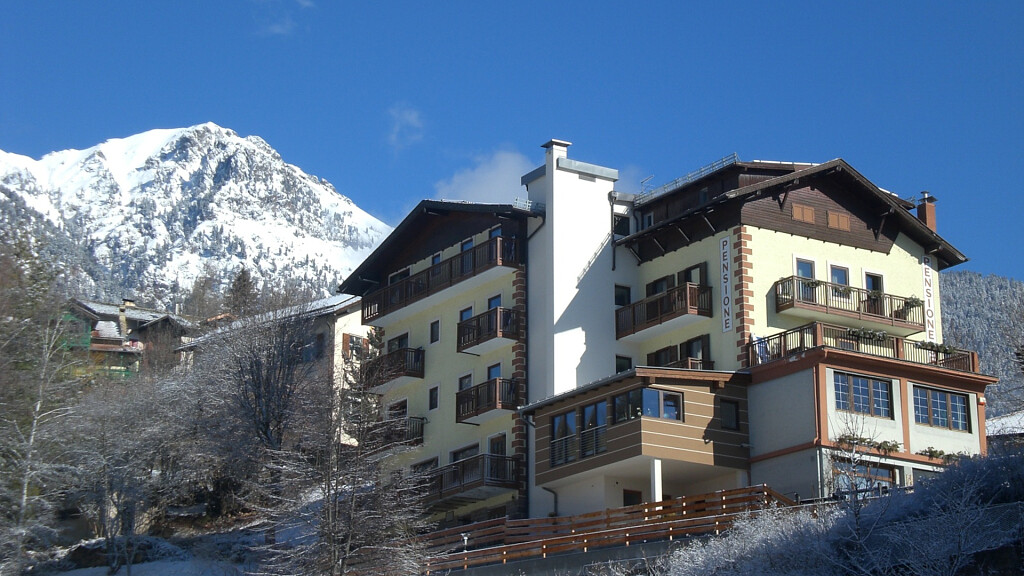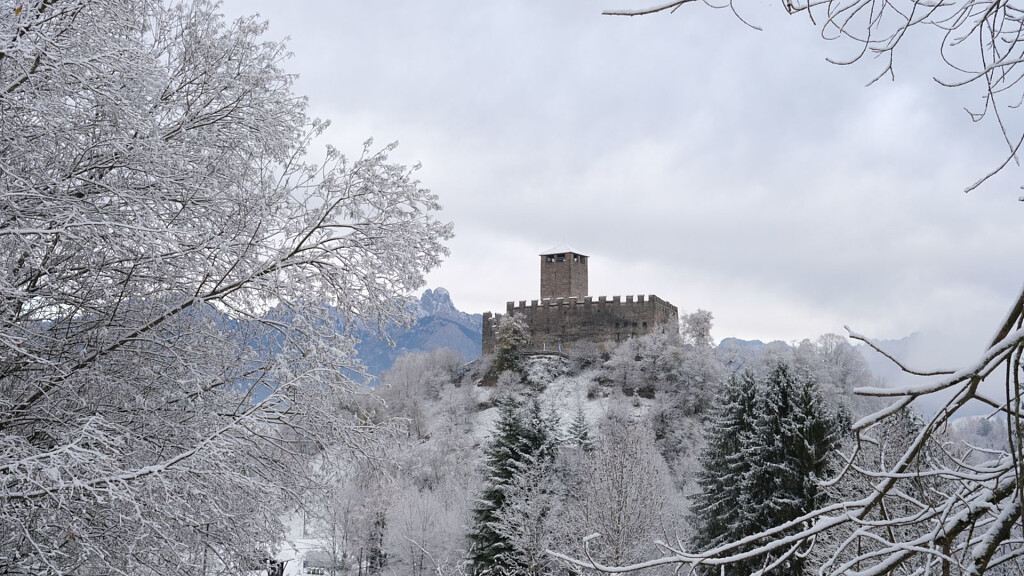The Austrian forts of the the Great War on the Trento tablelands. Even if since 1882 the Triple Alliance joined Austria and Italy, since 1908 the Viennese Government decided to build a modern and robust wall on the Italian border: seven armoured forts, on a 30 km line that connected Cima Vezzena to Folgaria Tableland.
This was always considered a masterpiece of military engineering which nowadays has become an impressive and fascinatig evidence of the Great War, as well as a historic and cultural heritage - one of the most interesting on the whole alpine chain.
All Austro-Hungarian forts (except for those at Busa Verle and Lusérn) were damaged during the World War I but kept intact. Finally, they were demolished in 1936 to extract the iron and steel they contained.
- Fort Cima Vézzena is an example of the Austro-Hungarian constructive skills: indeed, this fortress was built on the edge of a ravine and dug the top of the peak where it was situated, substituting the rock itself.
- Fort Busa Verle is situated at an altitude of 1554 metres on the hill to the north of Passo Vézzena and was built to bar the way that connects the Val d'Assa to the tablelands.
- Fort Lusérn (also called "Fort Cima Campo") permitted to look out the north area of Val d'Assa and served as the pillar of the so-called "steel trench".
- Fort Geschwent - Belvedere is the only fort left after the demolition occurred in 1936. The King Vittorio Emanuele III, visited this fortress (that had been the most important in the area) in 1935 and ordered to save it, so that also the future generations could remember the past events.
The remaining three Austro-Hungarian forts, where other dramatic events took place, are: 5. Fort Chele, 6. Fort Sommo Alto and 7. Fort Dosso delle Somme.
Nowadays you can go back to the past and to the most decisive events both of the Italian and world history visiting the Fort Geschwent Belvedere Museum, or walking on other paths.
Follow the Sentiero della Pace (Path of Peace) that covers over 450 Km of paths, forest ways, trenches and communication trenches and connects the Stelvio National Park to the Marmolada area, along the Great War front line.
You can plan your own excursion or book a guided tour (you will be accompanied by a qualified alpine guide) joining the service offered in occasion of theTrekking dei Forti or Marcia dei Forti.
Alternative itinerary: choose among the several paths that in few hours lead to one of the forts. For instance, you can walk along the way to Folgaria or Costa and reach Fort Sommo Alto, respectively in 4 and 3 hours. On the way you can visit the Echen biotype - a little uncontaminated spot - and Maso Spilzi, a large traditional rural estate.

